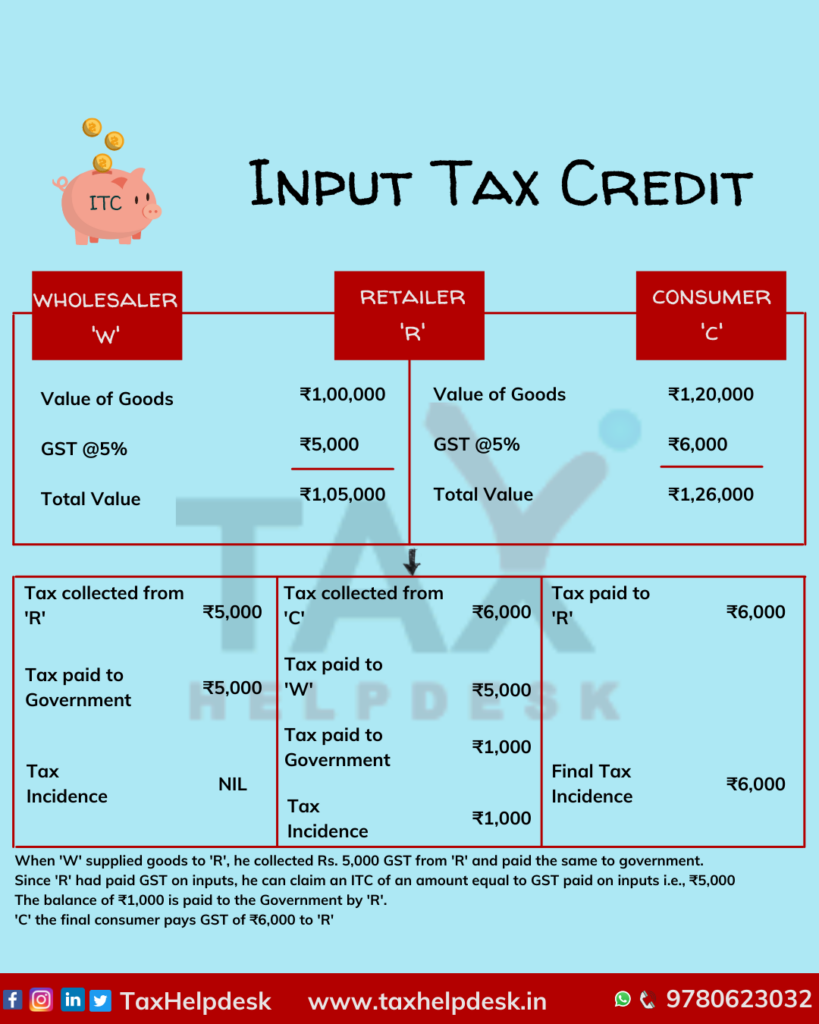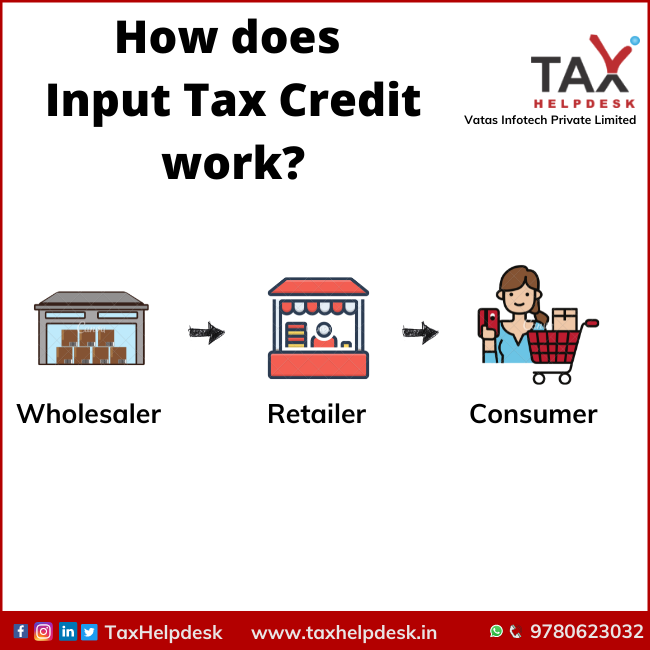Input tax credit refers to materials or services that a manufacturer procures or avails in order to manufacture a product or service which is the output. The payment of taxes by a manufacturer, while buying the raw material or services is input tax. Similarly, the tax collection on the sale of the product or services is the output tax.
The charging of GST is both on goods and services. Accordingly, the availing of the input tax credit can be on both goods and services.
What is Input Tax Credit?
Input Tax Credit (ITC) means that the taxpayer can reduce the taxes it has already paid on inputs from the taxes it has to deposit on output. In simple words, he can take the credit for the amount of tax. This amount of tax has been paid on procuring of inputs. By doing so, the taxpayer avoids paying double taxes on a single input.
Also Read: What Is The Impact Of ITC On Capital Goods?
What is the benefit of availing ITC
The benefit of availing of Input Tax Credit is that it ultimately reduces the final price to the manufacturer, wholesaler, retailer as well as consumer. Additionally, it also causes a paradigm shift from individuals paying more taxes to more individuals paying taxes.
Also Read: Rules relating to setting off of Input Tax Credit
How does Input Tax Credit work?
In order to have a clear understanding of the working of the ITC mechanism, one needs to have a clear understanding of ITC. When a manufacturer buys raw materials as inputs and sells the product, he pays tax on the material/input. So, when he has to pay tax on the output, he can claim the tax credit. In this claim, he needs to show that he has already paid to the vendor/supplier and pay the balance tax liability.
Illustration

Now, when ‘W’ supplied goods to ‘R’, he collected Rs 5,000 GST from ‘R’ and pays the same to the government. When ‘R’ further sold the goods to ‘C’, he collected Rs. 6,000 GST from ‘C’
Also Read: GST Registration On Basis Of State & Turnover
Since ‘R’ has already made payment of GST on inputs, he can claim an Input Tax Credit of an amount equal to the GST paid on the inputs i.e. Rs 5,000. The balance of Rs 1,000 is paid to the Government by ‘R’. Lastly, ‘C’, the final consumer pays GST of Rs 6,000 to ‘R’.
Conclusion
If the concept of ITC had not been there, the consumer would have been burdened with the payment of double taxation at each stage. Further, taking the credit of input tax promotes people to pay their taxes and not evade them.
To get more updates on Taxation, Financial and Legal matters, join our group on WhatsApp, channel on Telegram or follow us on Facebook, Instagram, Twitter and LinkedIn!
The views of the author are personal and TaxHelpdesk does not owe any obligation related to this blog!



Pingback: GST Registration on basis of State & Turnover | TaxHelpdesk
Pingback: 45th gST council meeting update | TaxHelpdesk
Pingback: Benefits of Filing GST Returns on Time | TaxHelpdesk
Pingback: Do you know about GST Refunds? | TaxHelpdesk
Pingback: Reverse Charge Mechanism Under GST Regime | TaxHelpdesk
Thanks, for this information, we want to more section wise GST details
Sure sir!